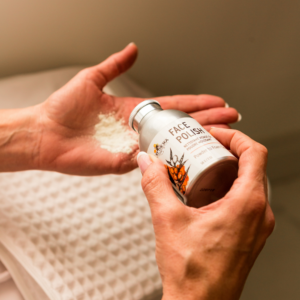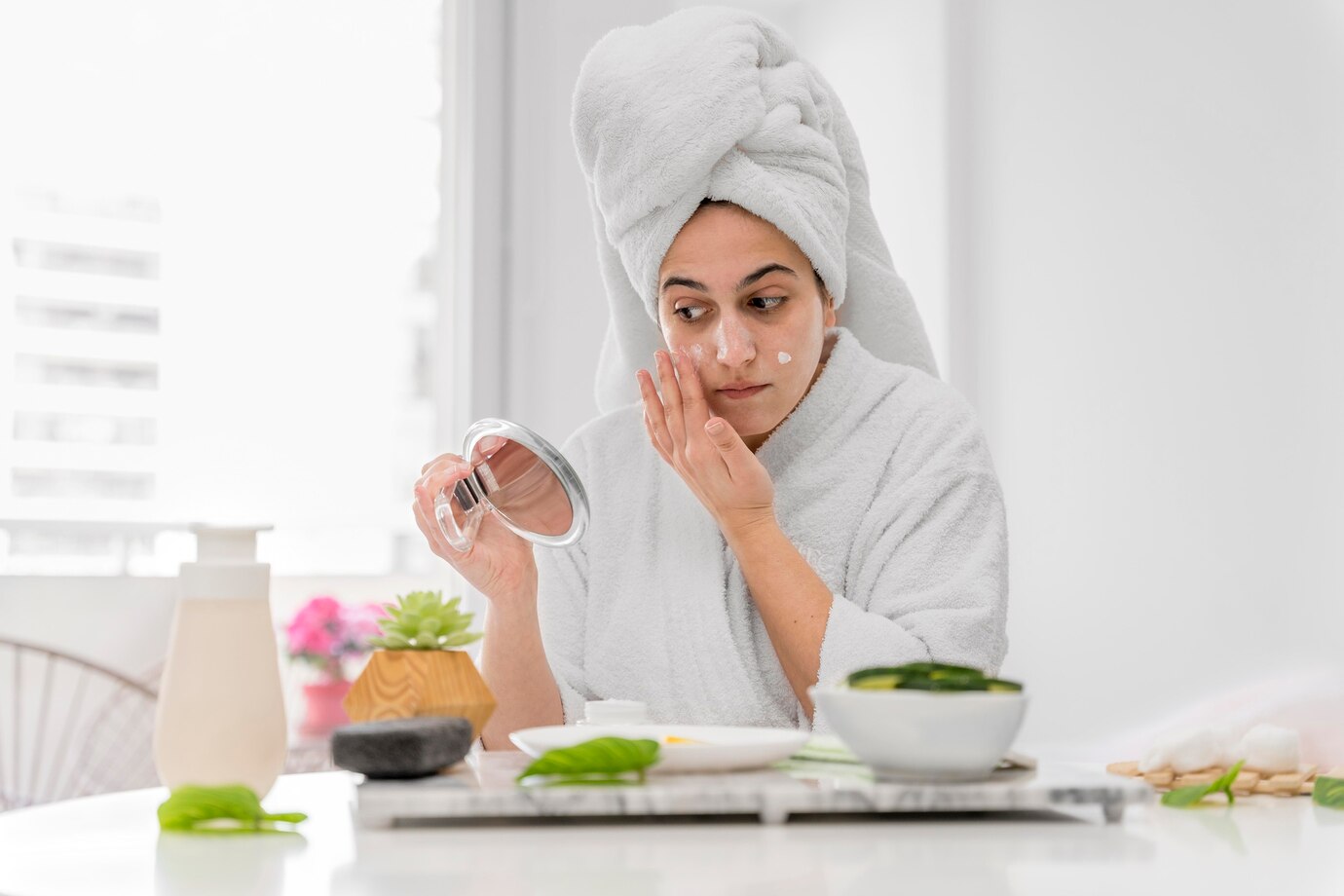A well-structured skincare routine includes products that cleanse, treat, and protect the skin. Among these, face polish plays a unique role that often goes unnoticed. Face polish is designed to exfoliate the skin gently, removing surface-level buildup and improving skin texture. It bridges the gap between cleansing and treating, ensuring your skin is better prepared to absorb serums, moisturizers, and other targeted products.
What Is Face Polish?
Face polish is a mild exfoliating product that removes dead skin cells, oil buildup, and impurities from the surface of the skin. Unlike harsher scrubs, face polishes typically contain fine exfoliating particles or enzymes that work without damaging the skin’s protective barrier.
Face polishes are often formulated with hydrating agents or soothing botanicals to support the skin after exfoliation. Their goal is not just to clean but to smooth, brighten, and help maintain the skin’s natural balance.

How Face Polish Fits into a Skincare Routine
Preparing the Skin
The first step in any skincare routine is cleansing. A good cleanser removes surface oil, dirt, and makeup. However, it doesn’t always get deep into the pores or remove dead skin cells effectively. This is where face polish becomes relevant. Used one to three times a week, it clears the way for better absorption of active ingredients in your routine.
Supporting Skin Renewal
The skin naturally sheds dead cells over time, but environmental factors like pollution and sun exposure can slow this process. When dead skin accumulates, it can lead to dullness, uneven tone, and clogged pores. Face polish speeds up this process, encouraging healthier cell turnover without stripping the skin.
Enhancing Other Skincare Products
After polishing, the skin is more receptive to other skincare products. Moisturizers, serums, and treatments absorb better into a smooth, exfoliated surface. This allows the ingredients to work more effectively and deliver noticeable results over time.
The Key Benefits of Face Polish
Improves Texture and Tone
Face polish helps in refining the skin’s surface. Regular use can make the skin feel smoother and appear more even. This is particularly beneficial for those dealing with mild acne scarring, dry patches, or rough skin.
Clears Congested Pores
By removing dead skin cells and excess oil, face polish helps prevent clogged pores. This is crucial for minimizing breakouts and reducing the appearance of blackheads or whiteheads.
Prepares Skin for Hydration
When dead cells accumulate on the skin, they can act as a barrier that blocks moisturizers. Exfoliating with face polish ensures that hydrating products penetrate effectively, improving moisture retention.
Brightens Skin Naturally
Face polish helps reveal fresher skin beneath the surface. Over time, this leads to a more luminous and refreshed appearance, especially when used consistently as part of a complete skincare routine.

Choosing the Right Face Polish for Your Skin Type
Selecting a face polish that matches your skin type is essential for achieving the best results without irritation.
For Dry or Sensitive Skin
Choose a face polish with ultra-fine particles and calming ingredients like chamomile, aloe, or oat extract. Avoid physical exfoliants with large or rough granules, which can damage delicate skin.
For Oily or Acne-Prone Skin
Look for formulas that contain salicylic acid, clay, or fruit enzymes. These ingredients help reduce oil buildup and prevent pore congestion without being too abrasive.
For Combination Skin
A balanced formula that hydrates while gently exfoliating is ideal. Ingredients like jojoba beads, rice powder, or lactic acid can provide a controlled exfoliation process without overdrying.
For Normal Skin
You have more flexibility with texture and ingredients. Still, opt for a face polish that doesn’t strip the skin and supports barrier function with hydrating or antioxidant components.
How to Use Face Polish Effectively
To incorporate face polish into your skincare routine without disrupting skin balance, follow these guidelines:
- Frequency: Use 1-3 times a week based on your skin’s tolerance and needs. Overuse can lead to sensitivity.
- Timing: Apply after your regular cleanser and before applying toners, serums, or moisturizers.
- Technique: Gently massage a small amount of polish onto damp skin using circular motions. Avoid pressing hard or scrubbing aggressively.
- Aftercare: Always follow with a hydrating product and sunscreen during the day. Exfoliated skin is more vulnerable to environmental exposure.
Common Ingredients in Face Polishes
Understanding what goes into a face polish helps in selecting one that works best for your needs:
- Jojoba Beads: Provide gentle physical exfoliation without scratching the skin.
- Rice Powder: Offers mild exfoliation and helps brighten skin tone.
- Fruit Enzymes (e.g., papaya, pineapple): Natural exfoliants that dissolve dead skin cells without abrasion.
- Alpha Hydroxy Acids (AHAs): Promote gentle chemical exfoliation and are suitable for aging or dry skin types.
- Clay: Often included in polishes for oily skin to help absorb excess sebum.
Face Polish vs. Other Exfoliators
Scrubs
Scrubs tend to use larger, rougher particles that can irritate or scratch the skin. While effective for the body, they are often too harsh for facial use, especially on sensitive or thin skin.
Chemical Exfoliants
These use acids or enzymes to dissolve dead cells. Face polish may include mild chemical agents but typically combines them with physical exfoliation for a balanced effect.
Exfoliating Tools
Brushes or cloths exfoliate using mechanical motion. However, if used improperly, they may disrupt the skin barrier. Face polish offers a more controlled exfoliating method.
When to Avoid Face Polish
While face polish benefits most skin types, there are times to avoid it:
- During active breakouts: Polishing over inflamed acne can worsen irritation.
- After procedures like peels or microneedling: Wait until skin heals before resuming exfoliation.
- If experiencing sunburn or severe dryness: Allow skin to recover before using exfoliants.
Building a Balanced Skincare Routine
A consistent skincare routine supports long-term skin health. Adding a face polish a few times a week can improve the effectiveness of your daily regimen. Here’s how you might structure your weekly routine with face polish included:
Daily:
- Cleanser
- Toner
- Serum
- Moisturizer
- Sunscreen (AM)
1–3 times per week:
- Face Polish (after cleansing, before serum)
This structure ensures your skin is clean, hydrated, and protected while benefiting from regular gentle exfoliation.
Final Thoughts
Incorporating a face polish into your skincare routine is a practical step toward healthier, clearer skin. It improves the absorption of other products, reduces dullness, and enhances texture—all while supporting your skin’s natural renewal process. When used correctly and consistently, face polish becomes more than just an exfoliator; it’s a valuable part of an effective skincare routine.

